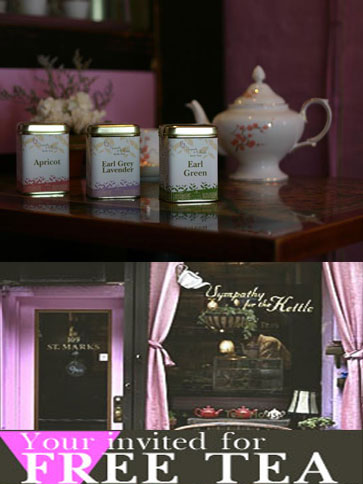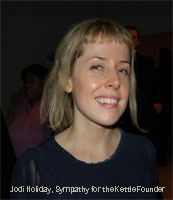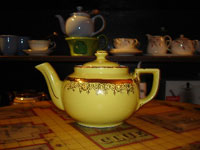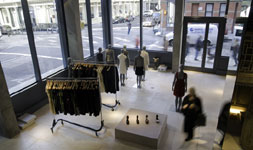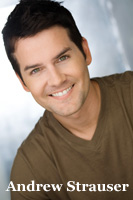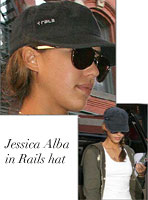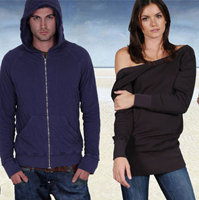|
Sympathy for the Kettle – Not your Typical Tea Retailer
We believe in tea. As an elixir, a life force, for the social quirks it ignites, but especially for the families, friends, and communities it unifies. -Jodi Holiday Hello Jodi. Why don’t you tell me a little about your tea house. My tea house is very unique. I have over 200 different blends, herbs, specializing in Chinese, African, and Indian teas. How did you get started in this? When I moved to New York six or seven years ago, I worked at various office jobs. I decided I couldn’t do that anymore, so I put my work to the side and started working on a business plan, and opened up a tea room in 2003. I was introduced to teas living in Europe in the mid 90s. Living in Germany and traveling through France,
That’s an interesting thing to pick up. Tea is very much an elixir. You’re grounded with tea. When you live in New York City, you need roots. A lot of people here are from all over the world, and we moved here for our ambition. It’s the hub of very ambitious people.And also in a city where there’s so much indulgence and it’s bad for you, you’re able to indulge in a swanky pot of tea that makes you feel good, and doesn’t give you a hangover the next day. It’s kind of perfect for New Yorkers that are stressed out The East Village is known for its bars, so instead of going to a bar, you can go to a tea room and feel good after your pot or two of tea. My employees laugh. If you have a big pot of Jasmine, you have a healthy buzz. On Friday and Saturday nights I call it a disco. Customers are talking to each other. Everybody’s But there are certain teas that do that. You have to know the specific teas, correct? All tea. Most of the teas that you find are all coming from the same plant. They’re just being oxidized to a different extent, or dried or mixed or spiced in a different way. A real tea is all from the same plant. The secret is to find quality tea. If it’s quality tea, you don’t have to put milk, sugar, or anything in it. The simplicity of tea is you’re drinking a steeped tea leaf. In a chaotic, busy world, there’s something very refreshing about drinking the simplicity of a tea leaf. Tell me about your involvement with fashion designer Vivienne Tam? Her people called me a few months ago. She wanted to get into the tea business. She imported a 150-year-old wooden hand-carved tea room from China and transported it in the middle of [her boutique], the Mercer SoHo shop. She is going to So you’re like a consultant in a way. Yes. But I will be selling her the various blends and training her employees on how to serve tea. For people trying to lose weight, which is the best tea? White tea Oolong. Tea and herbs are better than drinking water all day. Water just provides hydration, where tea provides nutrients. You need the antioxidants to kill the free radicals that destroy skin. Free radicals destroy cells, and essentially your skin. We’re all exposed to bus exhaust, fumes, and the food we eat, too. Tea has antioxidants that you don’t find in any other plants. We believe in tea, as an elixir, a To learn more about Sympathy for the Kettle, visit their websitewww.sympathyforthekettle.com. By Kaylene Peoples
|
Category: Articles
Sweat-free Fashion with Botox ® Cosmetic
Tatty Devine – The British Duo of Fashion Accessory Design
Tatty Devine – The British Duo of Fashion Accessory Design
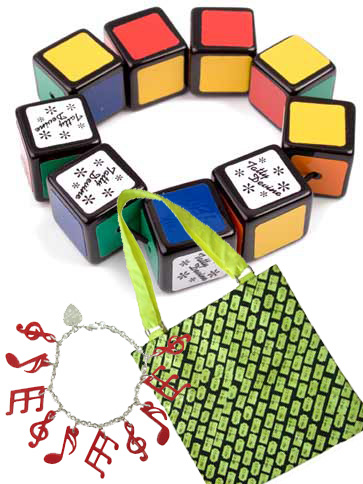 Tatty Devine was created in 1999. It is a unique and quirky accessory line. Rosie Wolfenden and Harriet Vine are the brains behind the successful jewelry designs. The company is based in Great Britain, and the two designers have no formal training as jewelers. Harriet and Rose met at Chelsea School of Art back in 1996. They had planned to become artists, but Harriet found some leather samples on the way home from the pub one night. She proceeded to make some leather cuffs. She and Rosie sold them at Portabello and Spitalfields markets—and Tatty Devine was born.
Tatty Devine was created in 1999. It is a unique and quirky accessory line. Rosie Wolfenden and Harriet Vine are the brains behind the successful jewelry designs. The company is based in Great Britain, and the two designers have no formal training as jewelers. Harriet and Rose met at Chelsea School of Art back in 1996. They had planned to become artists, but Harriet found some leather samples on the way home from the pub one night. She proceeded to make some leather cuffs. She and Rosie sold them at Portabello and Spitalfields markets—and Tatty Devine was born.
Harvey Nichols bought their accessories, then Browns, Focus, and Vogue Magazine took notice. Tatty Devine premiered their first official collection at London Fashion Week Spring, 2001. They have since shown their collection at Paris Fashion Week, and showcased in Berlin and New York, as well as having over 100 retail outlets worldwide.
I interviewed the British pair on their recent jaunt to LA and was thrilled to be given my own private showing of Tatty Devine’s collection.
“We express ourselves in everything we make. When we were in college, we did paintings—it’s all about the idea, and we were incubated in this conceptual cocoon. When we left college, we just hung out together, and all of our ideas and esthetics were really similar—we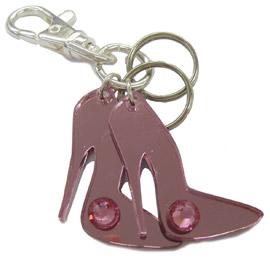 just started makingstuff.” —Harriet Vine and Rosie Wolfenden—
just started makingstuff.” —Harriet Vine and Rosie Wolfenden—
Harriet – It was just a series of fabulous events that just snowballed. You know, Rose was working at a vintage shop, and a woman from Vogue came in, and was just like, “Oh my gosh, I love that thing that you’re wearing. I really need it for my Millennium shot.” Then Rose had the audacity to say, “I made it myself. It’s from my company.” You know, so that was on Friday, and on Monday, we took to her … our …. It hadn’t existed on Friday!
Rosie – We made our collection on that weekend to take to Vogue. So we were just messing around having a really fun summer after college, visiting all the markets.
Harriet – We had no real desire to be fashion designers. We just wanted to be artists, to get studios, public views, and hang out with other artists. I guess if I had been a fashion student, I would have been really shy; but because I just didn’t really care, I admitted I made it myself.
Oh yeah, because you don’t have a reason to be afraid because you don’t really know what you’re doing anyway (laughs).
Harriet walked by a furniture store one night. They had thrown out all their leather sample booklets of every color, texture, and print—14 bins worth. Harriet dragged them all home;  they were perfect size twenty centimeters by twenty centimeters, which is the size of your wrist. We had ostrich skin and purple; we had snakeskin and blue; zebra skin and pink. Harriet just cut them up into wristbands.
they were perfect size twenty centimeters by twenty centimeters, which is the size of your wrist. We had ostrich skin and purple; we had snakeskin and blue; zebra skin and pink. Harriet just cut them up into wristbands.
Harriet – It was just before the whole eighties thing.
Rosie – So we took it to a market store, and everyone [loved them]. They sold for 5 and 10 pounds each.
They were just flying off the racks.
At first actually, people asked, “What is this? What do you do with it?” We told them they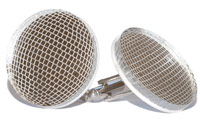 were wristbands. It took a little while, but within a month there were three other stands selling the same thing, but they could only afford to buy white leather.
were wristbands. It took a little while, but within a month there were three other stands selling the same thing, but they could only afford to buy white leather.
See that is a good thing. When someone is copying you, that is the highest possible compliment. That is when you say, “O.K., I am doing something right.” Tell me about your designs.
We’re kind of fascinated with history and fossils and dinosaurs. Apart from that, we really like the way the dinosaur necklace is made up of about 70 pieces. And each one is a bone from the dinosaur. They’re individually drilled, and we put our beads on individually. Sometimes we have to get them special order. Whenever I wear this [necklace], everyone is [in awe]. In London, people save up so they can buy it because they love it so much. We must have sold about 600 of these now.
It’s called the dinosaur necklace?
Yeah. That’s my favorite. Everything we care to make is in limited edition quantities. We laser everything that gets mass made. We couldn’t make thousands of anything.
laser everything that gets mass made. We couldn’t make thousands of anything.
Do you have letters of authenticity with your jewelry?
Well, that’s a really good idea because they do that in Singapore and Japan.
I’m sure they’ve got collector’s value. Down the line it could be worth something.
In Britain we don’t have to do it because everyone knows. Until recently they’d come to our shop and they’d watch the jewelry getting made. But I think letters of authenticity would be a very nice touch.
What are the materials you used to make these?
[In addition to other things], we used acrylic because it gives us the freedom to be very literal in our designs. We use [a variety of] wood, leather, solid silver, and Swarzsky Crystals. Then we create the drawings in the computer, which later goes into a [special] machine, which cuts out our drawings. It’s really nice. It’s like cookie cutters.
But it’s taken awhile to come up with such a smooth process, right? A lot of trial and error?
At first it was leather cuffs and then we moved on to hand cut leather shapes, and then we’d sew crystals on things. It’s like writing a Christmas list.
You’re actually setting a trend. And you guys really know how to market yourself. Do you think that has something to do with your success?
Up until a year ago, we were answering the phones. We were writing the press releases, trying to organize everything. My God, we nearly went mad. We’re finding liberation and now we’ve got 10 employees.
Tell me your highest high as jewelry designers.
When we got into Fashion Week, it was big. Every day something new comes along. I like that initial time of going to Vogue Magazine. That was quite amazing. It seems so crazy. We were like just two Indie kids—we were only 21..
What did your parents think about all this?
Rosie – My mum asked me what was I going to do when I finish college. [My parents] were a bit scared, because my parents were both self-employed and Harriet’s parents were always doing projects. Both of our parents are entrepreneurs. It never occurred to me to have a desk job. Not that I’d come into any money or anything, but I always thought I’d find my way.
Have you ever had any disappointments?
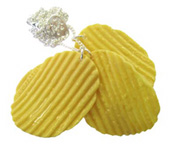 Not really. The biggest downer we had was when we participated in the Designers and Agents Show—it’s a trade show. We did it and it was great. And then we applied to do it again and we weren‘t accepted, which is annoying because we wanted to come over here. It wasn’t quite right. Because there’s nothing else quite like it. It’s really hard.
Not really. The biggest downer we had was when we participated in the Designers and Agents Show—it’s a trade show. We did it and it was great. And then we applied to do it again and we weren‘t accepted, which is annoying because we wanted to come over here. It wasn’t quite right. Because there’s nothing else quite like it. It’s really hard.
What advice would you give an aspiring entrepreneur?
You have to have a belief in yourself and have some interesting stuff. It’s not good enough just wanting to make jewelry. You’ve got to be interesting and have a lot of cool stuff, and have original ideas. Because it’s so dull seeing something that’s copied. Seeing something original really does just make my heart skip a beat. It’s lovely. And I think that’s what’s really important with our designs—they were just so fresh. You’ve really got to have faith in yourself, have no fear, and be prepared not to have any money for a while. We started with absolutely nothing. We started at zero, and months later we [earned] 200 pounds. And then we bought some more leather and then we sold it … and then we had 400 pounds. We never had a proper job, so we didn’t know what money was.
You didn’t know what to charge?
You really must be prepared for the fact that it takes a long time before you can really have a life. You just make jewelry all the time. You have to be prepared to work really hard; but to enjoy working really hard, have passion. And just like having initiative, I guess.
You guys are hard wired for business. I think it’s just in you. You’re artists, but you’re hardwired to be entrepreneurs, leaders.
I think entrepreneurship is a really creative thing. There’s business and then there’s being an entrepreneur. Entrepreneurship is the creative side of business. Because business really is creative. You can manipulate and point it to any direction you want.
To learn more about Tatty Devine and their collections, visitwww.tattydevine.com.
Interviewed by Kaylene Peoples
Merrell McGuinness Handbags – Making the Functional Handbag Fashionable
Merrell McGuinness Handbags – Making the Functional Handbag Fashionable
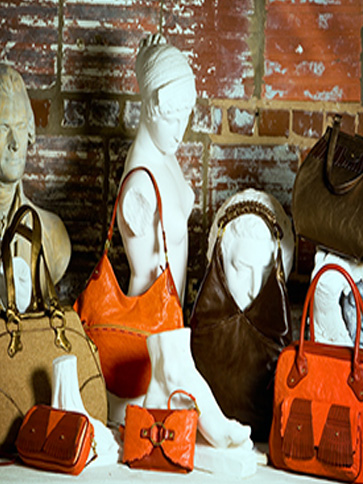 “I was working in a 9-5, and the only bags they had to carry were in black. They were so unattractive. All the beautiful designer bags that I loved were either too short, not wide enough, or didn’t have enough pockets.”
“I was working in a 9-5, and the only bags they had to carry were in black. They were so unattractive. All the beautiful designer bags that I loved were either too short, not wide enough, or didn’t have enough pockets.”
—Merrell McGuinness—
Handbag designer Merrell McGuinness received her inspiration in fashion from her mother’s (Marilyn Hubbard) vintage collection. Ever since Merrell was a child, she insisited on expressing her own personal style. At age 3, she wore fur-trimmed beige leather boots to preschool—not at all uncharasteristic of the years that followed. Both women’s (Merrell and her mother) creative backgrounds and love of all things beautiful was the impetus of Merrell’s intuitive designs. Once she started designing her handbags, word spread quickly by word of mouth, and orders flooded in. Merrell, while holding down a full-time job, and maintaining a growing business, realized the need for a functional bag that still expressed a personal style. She succeeded in creating a leather handbag system that had style, comfort, and functionality, clearly meeting the needs of a busy woman’s lifestyle. Since its inception, Merrell Handbags have been featured in Lucky Magazine, Atlanta Peach, Splendora, Daily Candy, AOL: Style List, Chip Chick, Fashion Newspaper, WWD, and more…
Your focus was to make handbags more functional for women?
I was working in corporate America, and I never really had a way to channel it. With 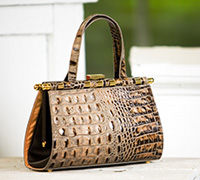 designing handbags, I never really had a background in it, but felt like I studied them from a consumer standpoint. I was working in a 9-5, so to say, and the only bags they had to carry were in black. They were so unattractive, and so the idea came … all the beautiful designer bags that I love were either too short, not wide enough, or not enough pockets, so I did a lot of things [that had not been done before.]
designing handbags, I never really had a background in it, but felt like I studied them from a consumer standpoint. I was working in a 9-5, so to say, and the only bags they had to carry were in black. They were so unattractive, and so the idea came … all the beautiful designer bags that I love were either too short, not wide enough, or not enough pockets, so I did a lot of things [that had not been done before.]
What were some of those things?
Our signature layered piping in the front. That was inspired when I was outside in the country with the symmetry and the lines in the country. Two layers of piping is not ground breaking, but the way it is laid out is kind of unique. Some of the pockets on the front, we even had to take the pockets off some of the bags because it was too mystical to the pockets and it wasn’t feeling right. Our “Sarah Clutch“… that’s definitely unique. The “Margaret” bag has a very functional wallet inside the bag.
How long have you been designing bags?
It’s been a three-year research process trying to figure out how I wanted to make them, and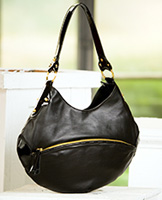 last spring was our first season.
last spring was our first season.
How has it been going since you’ve been selling your bags?
It’s gone so well. People respond to it and say, “It’s a great idea! I love the detail.”
I think you really accomplished what it is you set out to do. Because I just opened the box and I thought the bag was beautiful…like the choice of leather, the coloring … there’s a lot of texture, and the look of it.
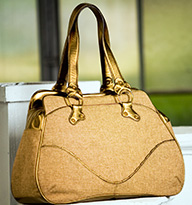 Thank you, for spring we went with a very neutral color pallet, and for fall we went with a much darker color pallet. We have 44 stores that are listed online, and one that’s in California (La Jolla). People can definitely buy it online.
Thank you, for spring we went with a very neutral color pallet, and for fall we went with a much darker color pallet. We have 44 stores that are listed online, and one that’s in California (La Jolla). People can definitely buy it online.
What direction do you see your bags going in for this [fall] season?
We have the “Raquel” and the “Eloise” design, and they are inspired by vintage bags from the 60s. But they also have the 40s feel to them. I was just keeping it a clean line, simple, but interesting shape.
Sounds like you had a pretty good job before. Was it a struggle for you to quit your job?
I am doing handbags full time, and it wasn’t a hard decision. I have a habit of biting off more than I can chew. Once we really got into full swing, I realized that I never really liked being in a cubicle. It was really challenging, but great. My husband asked me when [my designs]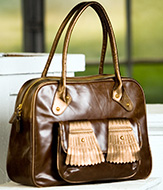 were going to make a profit. It’s been very interesting. I’ve taken a lot of risks, but I have also seen a lot rewards.
were going to make a profit. It’s been very interesting. I’ve taken a lot of risks, but I have also seen a lot rewards.
Where do you see Merrell Bags in five years?
Well, I see Neiman … the whole 9 yards … expanding through wholesale channels.
To learn more about Merrell Handbags, visit the website:www.merrellbags.com.
Interviewed by Kaylene Peoples
Trapped Inside the Story Leslie Cohen
Leslie Cohen
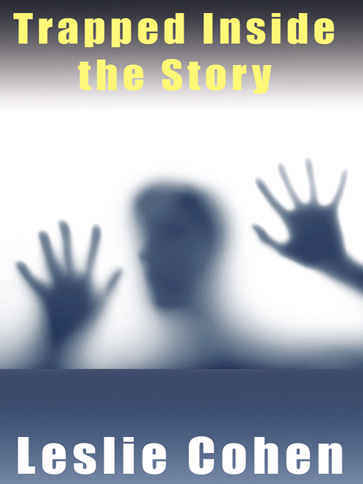 Trapped Inside the Story is so good I predict a bestseller! Written by Leslie Cohen, it is the historical biography of Holocaust survivor Naomi Kalsky, born Sonya Hebenstreit.
Trapped Inside the Story is so good I predict a bestseller! Written by Leslie Cohen, it is the historical biography of Holocaust survivor Naomi Kalsky, born Sonya Hebenstreit.
The biography opens with Sonya Hebenstreit, seven years old, Jewish, living in Poland during the Russian occupation in 1941. Her family, along with the rest of the people of Lvov, Poland, have struggled throughout the 1930s because of the Great Depression. Before the Depression, Sonya’s father, Israel, had owned his own bakery, but now he works for someone else. Then comes the Nazi invasion, and the Russian Communists leave, inviting any of the people to emigrate to Russia. Sonya’s family, unable to afford the cost of relocating, is soon at the mercy of the Nazis, who have now taken over.
Sonya’s story is told in the genre of the fairy tale—and they lived happily ever after, generally—because of the heroine’s love of fairy tales. As a child, she reveled in the stories of the Ukrainian housekeeper, Zoshka; and the heroes of those stories became her friends. Then, she learned to read herself and read all of the fairy tales she could get her hands on.
Sonya is the oldest of three children. She has a younger sister, Rosa, and a baby brother, Emmanuel. First, her father disappears. He was taken by the Germans and made to work. He manages to escape, but when he returns home, he is fatally ill. Next, her mother disappears, having gone to “volunteer” her services now that her husband is too ill. She never returns. Sonya, the oldest, is left now to take care of her father, her younger sister, and her baby brother. Finding food for everyone and milk for the baby becomes the hardest thing for Sonya.
Soon her father dies, and twelve-year-old Sonya, unable to escape her fate, continues to feed and take care of the family she has left. Emmanuel becomes ill, and in spite of herself, she has to leave him in what passes for a clinic in hopes he recovers. She never sees him again. Finally, Rosa disappears in a roundup while Sonya is away searching for food.
Due to her ingenuity, her fairy tale friends, and the non-Jews who help her in spite of the repercussions if discovered, she manages to evade capture by the Germans; and to survive, as she must, she does whatever survival dictates. Dealing on the Black Market and stealing from apartments that have been abandoned by families taken in roundups are the worst until she has to pretend she’s a Gentile, abandoning her faith. Her fairy tale friends, however, assure her she must do what she must to survive. And always, the hope of seeing her mother, her sister Rosa, and her brother Emmanuel again keeps her going.
She likens the occupation of the Germans to a fairy tale, inside which she is trapped, unable to escape, a fairy tale in which the bad guys win; and again the reader witnesses the atrocities the Jews suffer at the hands of the Nazis and at the hands of some of the non-Jews, mostly because they fear the punishment if discovered befriending or otherwise being kind to Jews. Yet, just as in other stories of the Holocaust, there are those who risk their lives to help the Jews, and this, too, adds to the pathos of the biography.
Not since The Diary of Anne Frank or Elie Wiesel’s Night have I been so touched by the memories of the Holocaust. An orphan now, the thing she feared most, having seen in her fairy tales and in school how orphans were treated, Sonya cries: “I’m an orphan—like some of the heroes in fairy tales I’m like a character in a story. It’s as if I’m trapped inside a horror story––a story so strange, so far-fetched, and so nightmarish that it can only be a fairy tale” (114).
Originally, there were 100,000 Jews in Lvov. Along came the Russian occupation. Then, on June 22, 1941, with the news of the German invasion, about 10,000 Jews left Lvov with the Russian army. On June 29, the German army entered Lvov. In July German soldiers and Ukrainian nationalists began to murder Jews on the streets, and by August 3, 4,000 Jews had been murdered. At the end of the war, there were only 600 Jews left, Sonya, fourteen or fifteen years old now, one of them, the only member of her family left.
Book Reviewed by Lee L. Peoples
Published by Level 4 Press, Inc.
13518 Jamul Drive
Jamul, CA 91935
www.level4press.com
ISBN: 978-1-933769-16-5
TV Land, Beverly Johnson, Wilhelmina Models, Inc., and Time Warner Cable L.A. Present a New Kind of Modeling Competition – Twenty Somethings Need Not Apply!
You Won… Have You Been Scammed Lately?
Cool and Comfy in Rails
The Christmas Workout – Give Your Diet the Month Off
The Christmas Workout – Give Your Diet the Month Off
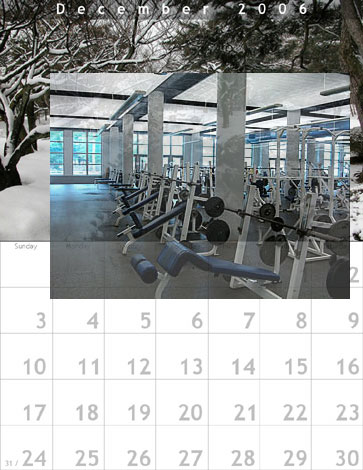 It’s the Holiday Season. The air is filled with the aromatic smells of the fresh pine needles and burning fireplaces. We are treated to the festive sights and sounds of the season: the brilliant Christmas lights, the holiday songs playing on the P.A. system in the supermarket, the cheerful decorations even in not so cheerful places, like the DMV.
It’s the Holiday Season. The air is filled with the aromatic smells of the fresh pine needles and burning fireplaces. We are treated to the festive sights and sounds of the season: the brilliant Christmas lights, the holiday songs playing on the P.A. system in the supermarket, the cheerful decorations even in not so cheerful places, like the DMV.
There are also some rather unpleasant sights and sounds, like increased traffic, no available parking spaces, and whining spoiled brats in the toy stores. But one of the most distressing of the Holiday Season is the sight of our own expanding waistline. You look down at your belt and realize you have to back off one notch, at least if you’re considering exhaling at all that day.
The Health Clubs do some of their best business right after the Holiday Season as guilt- filled resolution makers repent in droves: “Forgive me, Personal Trainer, for I have sinned. It’s been two months since my last workout.” The trainer would reply, “Give me ten Hail Marys, twenty push-ups, and fifty crunches. Now go, and sin no more.”
This is an annual cycle we seem to find ourselves in. When I say we, I mean regular working folk, non-professional athletes, with at least some responsibilities. And while I have written a few health and fitness articles for Agenda Bride , I am not your typical fitness guru. I’m right there in the fight with you. Consequently, I have a perspective that I find lacking in many of the fitness-related articles I read in many magazines. I tailor my articles to people that have an open mind, and some sense of balance. The tips I give can be followed for a lifetime, not just for a six-week crash diet.
Most of the fitness articles I read are written by certified personal trainers with backgrounds in nutrition. That’s admirable because it’s hard to take health tips from a 300-pound smoker with a chili dog in one hand and a beer in the other. But trying to live like a 22-year-old personal trainer, unless you are one, is pretty unrealistic as well. I don’t live in lycra. And working out takes time, not just the activity and travel, but the warm up, cool down, and clean up. For me, time is my most precious commodity.
For them, health and fitness is quite literally their life. They are up on all the latest information because, make no mistake, health and fitness is a science. New studies come out daily stating which vitamins and nutrients are best for muscle building, weight loss, and energy production. They plan their daily routine around their exercise requirements, and food intake. If you have a heavy school load, a full-time job, or a family, fitness can be a high priority, but maybe not your top priority all the time. That’s the difference.
Besides, these are the Holidays. Some of the best food sensations of the year are to be enjoyed during this time. If you try to follow some super strict program now, you’ll deprive yourself of some of what makes this season so eagerly anticipated, and so much fun. I know that sounds very unguru-like. But I’m not encouraging gluttony either. I’m simply saying enjoy the foods of the season in moderation. And maintain or increase your level of physical activity to at least maintain your fitness levels during these times. When January rolls around, you’ll have some good habits established, and you can get more specific with your diet without all the Holiday Season distractions.
If you remember this season’s Dancing with the Stars television show, the winner was former Dallas Cowboy running back Emmitt Smith. He is 5′ 9″ and about 210. Picture him with smaller arms, and a smaller bank account, and that’s me. I train in Mixed Martial Arts twice a week and try to get to the gym another three times a week. I will sometimes play basketball at the park with twenty-somethings, and hold my own. And I used to race bicycles, so it’s not uncommon for me to hop on the road bike and put in 30 to 40 miles on a Sunday morning.
I’m highly competitive now, which makes it impossible to eat a planned meal every three hours, as studies have shown is optimal for speeding up one’s metabolism. That’s crucial for weight loss, and fat burning, so I’m at a disadvantage there. I have a wife and kid that command a certain amount of my spare time, especially during my son’s various sports seasons. And there are days, particularly high stress days, when calculating calories is just another stressor I’d prefer to ignore. Besides, I really love food.
Am I in good shape? Yes, especially for my age group. My health is important to me. Am I in the best possible shape? Nope. I’m not willing to make the sacrifices necessary to attain such a goal. I’d have to be a lot more selfish. Could I afford to lose a few pounds? Yes–ten to be exact. And I will do it the same way I suggest in my articles. Not with some complicated 40-30-30 plan, not with some fad diet like the South Beach, the North Shore, Eastern Seaboard, or whatever. I’m not going to call Roto-Rooter for my colon, either. I’ll simply chart my caloric intake, maintain balanced nutrition, cut down on empty calories (sweets, and snack foods), and get some discipline into my workouts.
My mantra is burn more calories than you take in. It is really an oversimplification of a plan that involves aerobic activity in the morning before eating (enhanced metabolism), eating five to six small meals a day, with fruits and vegetables in most of them. A low calorie protein shake would qualify as a meal. Staying hydrated by drinking around 64 ounces of water during the day. And generally being more active in my everyday life, like taking the stairs every once in a while. Or maybe it’s walking to the grocery store instead of driving. It can be as simple as playing catch with my son, or taking the dog out for some playtime.
If for some reason it is necessary for you to lose weight right now, may the force be with you. It won’t be easy with all this temptation around you. Activity and hydration are going to be your keys to success. And try to steer clear of all the desserts. If you have a slice of pumpkin pie with whipped cream, be prepared to extend your aerobic workout an extra 30 minutes to compensate. If you are strength training, increase your intensity because muscle burns more calories than fat at rest. Adding muscle to your physique doesn’t just make you look better; it supports your skeletal structure and makes you a more efficient fat burner.
But it’s the Holiday Season, and I’m not going to be deprived of all that good Holiday Season food. I wouldn’t ask myself to lose weight during this time. I thoroughly enjoy these culinary delights that come once a year. I will try not to overindulge. And I’ll maintain a high level of physical activity, and stay hydrated. Consequently, I won’t gain extra weight. There will be no gym confessional for me come January. How about you?
Written by Kevin Foster
Auf Wiedersehen, Uncle Sam
Insights
Auf Wiedersehen, Uncle Sam
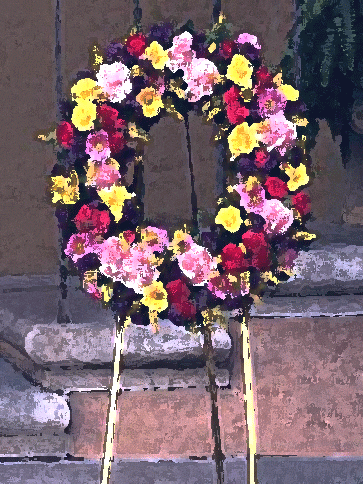 Often in life we serve others and for that service we expect returns. We give to our children and we expect from them obedience and respect. We expect them to love and appreciate us.
Often in life we serve others and for that service we expect returns. We give to our children and we expect from them obedience and respect. We expect them to love and appreciate us.
We give to our lovers and we expect them not to disappoint us. We expect life to reward us with favor, especially when we have been just and fair.
Things don’t always go as planned, however, and our due is often delayed, or not received at all.
Our children sometimes hate us; our lovers often go astray.
Where is the justice? Where is the fairness? Life is not fair. Life unfortunately has a life of its own.
He who can follow the wind from whence it came is he who can anticipate the outcome of any event. The origin of the wind is a mystery as often are life’s outcomes.
My Uncle Sam was diagnosed with lung cancer less than six months ago. We buried him this past weekend.
My uncle was funny, quick witted, determined. For someone so full of life, death came as an unwelcome surprise not only to him but also to his friends and family.
Many good things happened as a result of Sam’s death. For one, he brought me home.
I try to find meaning when someone I love passes on. If there is any meaning in death, I believe it is to help us recognize that we all are mortal and our time together should not be treated recklessly. He’s out of my life now, and I regret not making the trip to see him sooner; but I do cherish the opportunity his death gave me to get in touch with loved ones that I hadn’t seen for many years.
Regretfully, I did not have one last opportunity to laugh at his jokes or witness his smile, as did my cousin in Atlanta, who visited him very early in his illness. Or recognize that the twinkle in his eye was a sign that someone was about to be a victim of some witticism.
The rest of the family, some many miles away, rallied to take care of their brother, my uncle. I spoke to him when he could no longer respond. My sister talked with him, laughed with him, and shuttled all our relatives back and forth to and from the airport. Another cousin, in spite of her own failing health, traveled a great distance just to see him before he died. Her son, took off work to drive her. Others of us came too late to walk with him one last time or hold his hand one last time or say one last word to him before he took his last breath. But we showed up to usher him into the next transition and help him enter what we deem as his peace.
At his funeral we sang many songs and gave recollections of many experiences that caused us to smile at the man we called Uncle Sam. I’m sure he was there laughing and crying along with us as we bade him Auf Wiedersehen: not goodbye, but “Until we meet again in the bye and bye.”
What we produced by all these acts is a sort of comfort for all those who had to wish their loved one good bye. And through this completed act, we have created a kind of tapestry that is a reflection of the many lives that shared this man’s one life.
Until we meet again, Uncle Sam, rest in peace and continue on laughing and living in our hearts.
Written by Lisa A. Trimarchi
